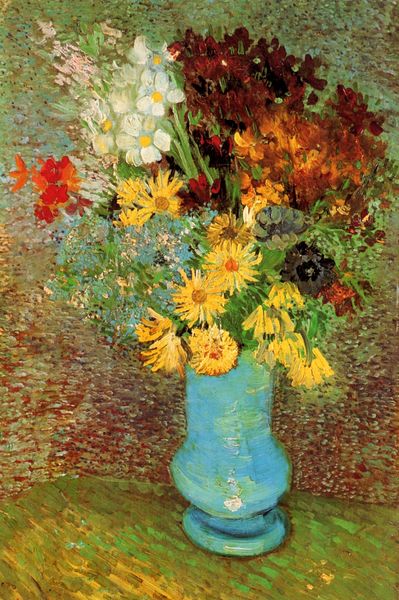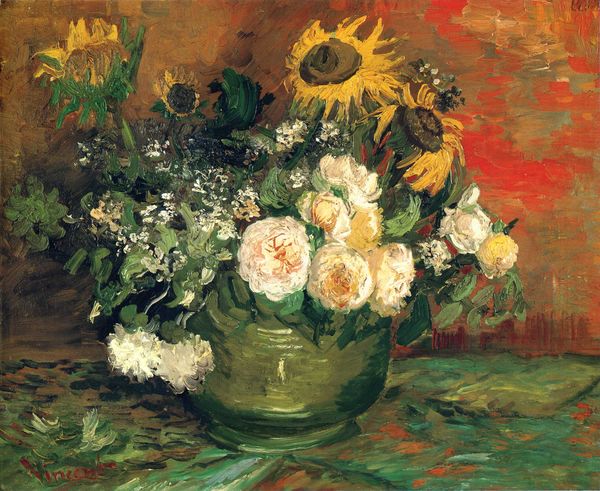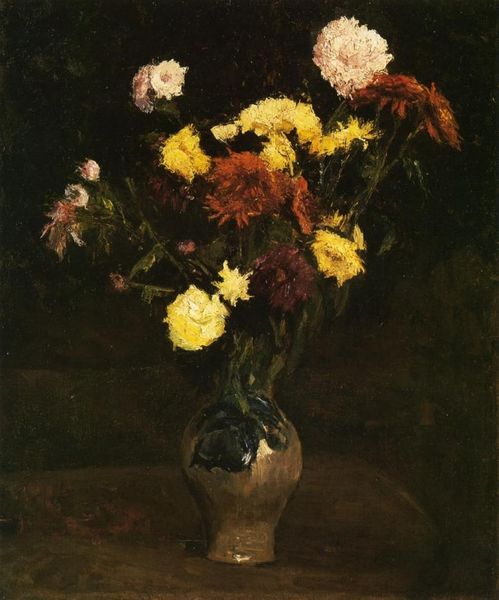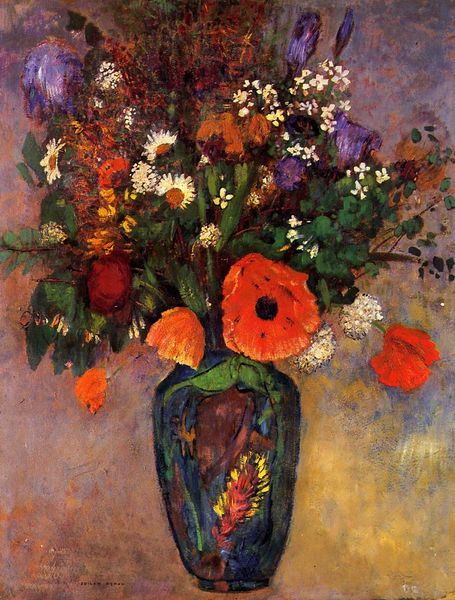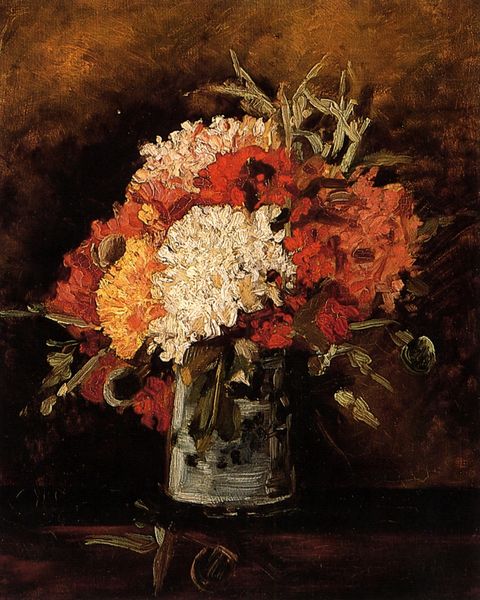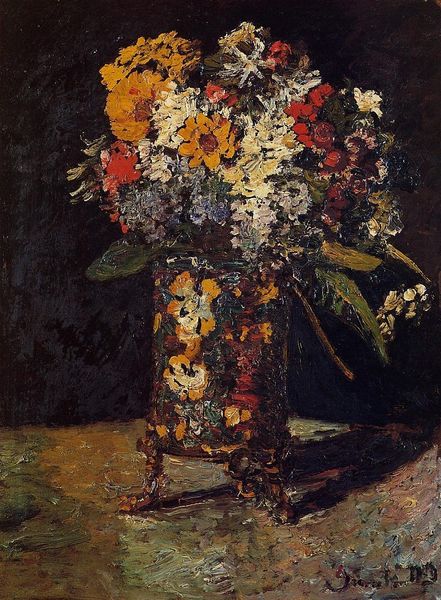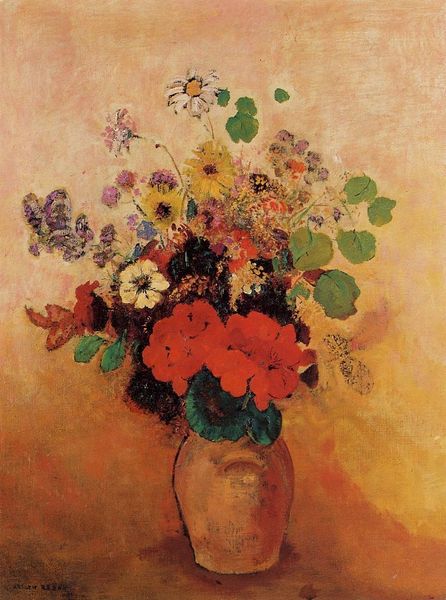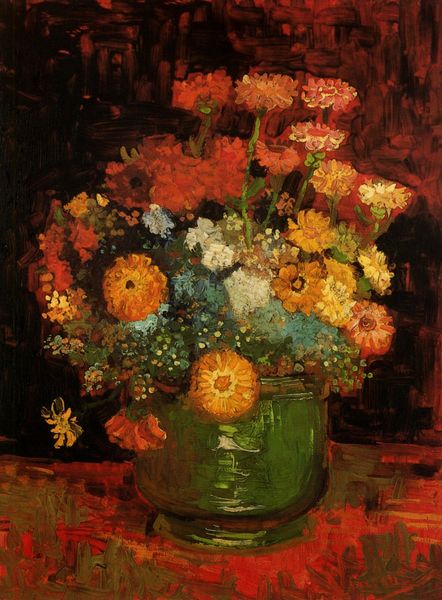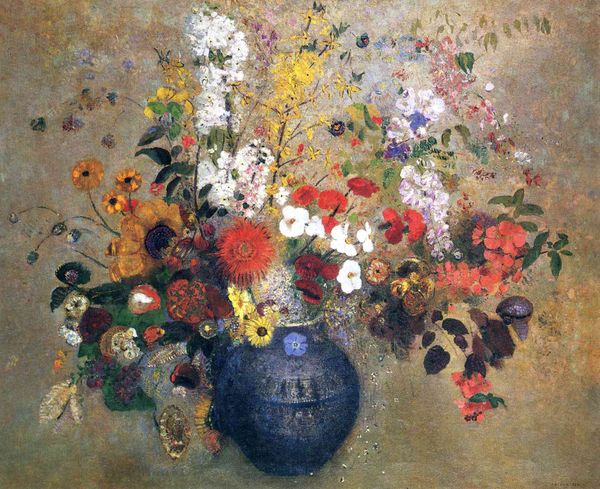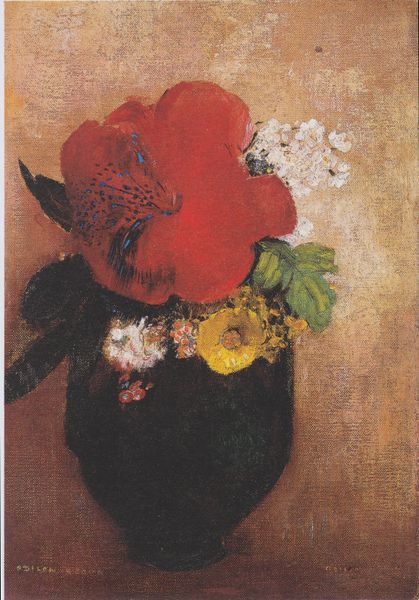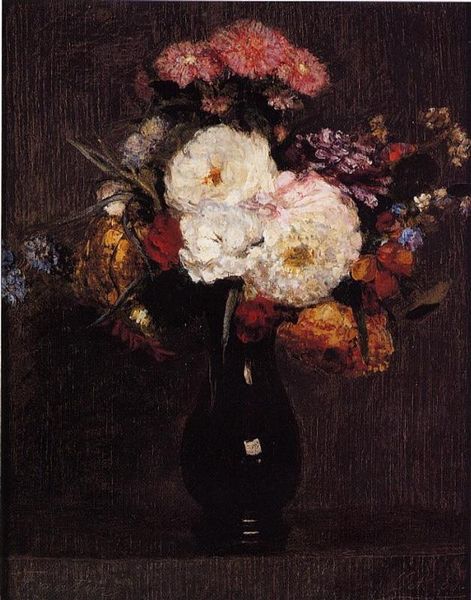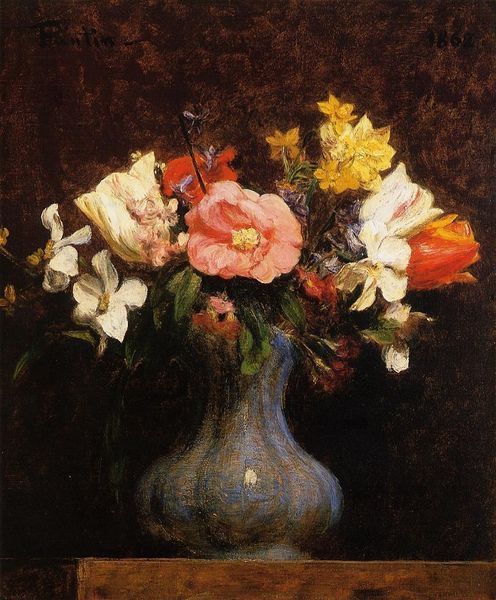
Copyright: Public domain
Vincent van Gogh created this oil painting of zinnias and geraniums in France, sometime in the late 1880s. His still lifes are interesting to consider from a social point of view. During the 19th century, the French Academy maintained strict hierarchies of artistic genres. History painting, with its grand moral narratives, was considered the most important, with still life at the bottom. Van Gogh and his contemporaries were challenging such hierarchies by taking everyday subjects like flowers or shoes and treating them with the same seriousness as traditional subjects. These artists were questioning the very institutions that defined what art could be. To better understand Van Gogh's project, we can examine exhibition records, dealers’ correspondence, and art criticism from his time. That kind of research helps us see how artists create new meaning by challenging accepted social and institutional norms.
Comments
No comments
Be the first to comment and join the conversation on the ultimate creative platform.
